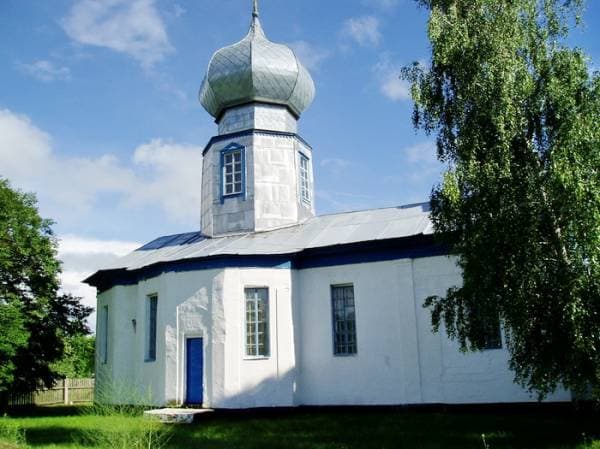Verbovichi. St. Paraskeva Pyatnitsa Church.
Church
49A Sovetskaya Street, Verbovichi village, Narovlyansky district, Gomel region, Belarus.
Description
The temple architecture of the Narovlya district is represented by the Church of St. Paraskeva Pyatnitsa, which is located in the village of Verbovichi.
The church of Paraskeva Pyatnitsa was built in 1847, but it was damaged during a fire and rebuilt in 1853. The temple is a monument of late Baroque architecture, and is included in the State List of Historical and Cultural Values of the Republic of Belarus.
Categories
Historical
Architectural monument
Comments
Reviews to the Place
1Ольга Ерёменко
22.06.2025
The Church of St. Paraskeva Pyatnitsa is a late Baroque architectural monument.
The very first written mention of the village of Verbovichi is related to church records and dates back to the fourteenth century. In the 17th century, Saint Theodosius from the Kiev-Pechersk Lavra founded in Narovlya land a monastery for monks who were especially famous in the Orthodox faith.
The current church was built at the expense of the local patrimonial owner, Colonel Nikolai Brozin. The parish included several villages. The interior of the temple consisted of a wooden iconostasis, which housed 28 icons placed in four rows and a gilded royal gate. All the utensils necessary for the service were available, but only the liturgical vessels were silver. There were two gospels for worship. One is in a metal frame, and the other is in crimson velvet. Metric books have been kept in the church's archive since 1800.
The temple in Verbovichi is located in the center of the village and is built of brick. The characteristic features of the Baroque architectural style are manifested in the multifaceted polygonal plan and the plasticity of the volumes. The slightly vaulted ceiling of the church has been replaced by a flat-lined ceiling. The cruciform brick building is covered with a multi-pitched roof of later origin. The side chapels and the apse are represented by pentagonal structures. A lower wooden vestibule with a single-pitched roof was later added to the refectory.
The plaster walls are divided by rectangular windows. The interior of the church has also developed dynamically, from the long refectory to the wide crosshair of the prayer hall and the narrow faceted apse. The cross-shaped building is covered with a sloping multi-pitched roof. The side chapels and the apse are designed with pentagonal volumes. The facades are pierced by high-raised rectangular window openings and surrounded by profiled cornices. The entrance is decorated with a two-stage porch, the side entrances are walled up. There was a bell tower separate from the church. There were 2 cast-iron bells weighing 10 pounds each and three bronze bells weighing two pounds each.
With the advent of the Bolshevik Soviet government and during the 70 years of its existence, the church was closed twice. In the thirties, the priest was repressed, and the church was closed in 1935. The last time the temple was closed was in 1962.
After the Great Patriotic War, the building was used as a warehouse, a village club, a library, and later as a school museum of local lore.
The church was returned to the faithful in 1988. In the nineties, restoration and restoration work began on the Church of St. Paraskeva Pyatnitsa in Verbovichi.
A 17th-century bas-relief image of the Blessed Virgin Mary, made of wood with carvings and polychrome, as well as paintings painted in the 19th century depicting the temple in Verbovichi, have been preserved to this day. The parishioners who are in the church still feel the atmosphere of the old church and the religious past of these places.


